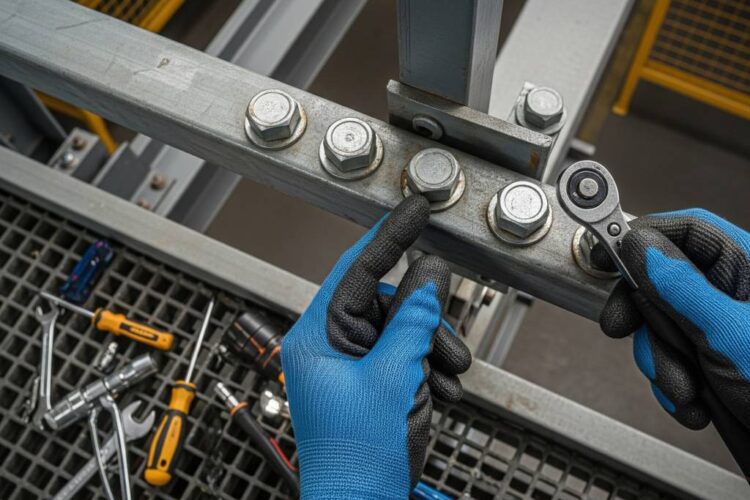
- By Swati
- In Customized Mezzanine, Decking, Flooring, Load capacity, Mezzanine Floors, Tiered Mezzanine
From Bolts to Beams: Ensuring Mezzanines Can Handle the Load
When it comes to mezzanine floors, safety and durability depend on much more than just the visible structure. Every bolt, beam, and connection point plays a vital role in ensuring the mezzanine can handle its intended load. Whether used in warehouses, offices, or retail, a well-engineered mezzanine is only as strong as the smallest component holding it together.
Why Load Capacity Matters
Mezzanines are designed to maximise vertical space and support everything from people to heavy pallets. Exceeding or misjudging their load capacity can lead to structural strain, costly repairs, or even dangerous failures. That’s why load planning is a critical part of the design and installation process.
From Bolts to Beams: The Key Components
- Structural Beams
Beams form the backbone of a mezzanine. Correct sizing, spacing, and steel quality ensure the structure can carry dynamic and static loads safely. - Bolts & Connections
Bolts may seem small, but they’re what keep the entire frame secure. Proper tightening, use of high-grade fasteners, and regular inspection prevent loosening over time, especially in high-vibration environments like warehouses - Decking Materials
The mezzanine deck distributes weight across the beams. Options like steel grating, composite, or heavy-duty boards are chosen depending on whether the space will hold people, storage racks, or machinery. - Handrails & Safety Features
Handrails, pallet gates, and balustrades don’t just provide safety for people—they also add stability to the mezzanine by strengthening edge sections.
Installation & Maintenance Best Practices
- Follow Load Ratings: Always design mezzanines with future use in mind. Overloading beyond design specs shortens lifespan.
- Precision Fixing: Every screw, bolt, and bracket should be installed with torque accuracy and double-checked before use.
- Routine Inspections: Loose bolts or corroded beams compromise safety. A maintenance schedule prevents small issues from escalating.
- Compliance with Standards: Adhering to building codes and fire protection rules ensures legal and structural safety.
The Human Element in Engineering
While mezzanines rely on advanced engineering, the installation process is hands-on. Skilled workers tightening bolts and aligning beams make the difference between a structure that lasts decades and one that fails prematurely. The craft behind these details is as important as the materials themselves.
Ending not: From bolts to beams, every part of a mezzanine floor matters. By focusing on proper design, quality components, and careful installation, businesses can ensure their mezzanine not only handles today’s load but adapts to tomorrow’s needs. Get in touch with our team to ensure your structure is built for safety, strength, and long-term performance.



